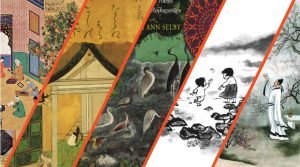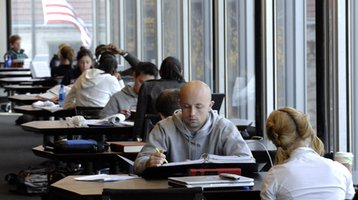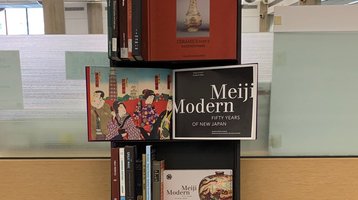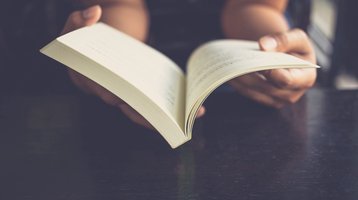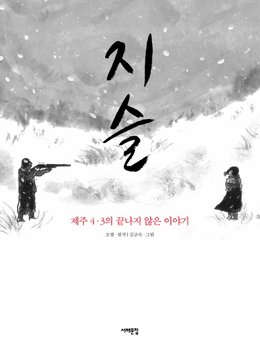Celebrating the Poetry of Asia and the Middle East
For their inaugural joint exhibit, five area-studies librarians on the fifth floor of the Joseph Regenstein Library celebrate poetry from their own areas of expertise. The items highlight the diversity of poetry traditions.
Marlis J. Saleh, Bibliographer for Middle Eastern Studies
Shown are one item to represent each of the three major poetic traditions of the Islamic Middle East: Arabic, Persian, and Ottoman Turkish. Each item also offers an example of their respective traditions of manuscript illumination.
Laura Ring, Librarian for Southern Asia and Anthropology
Southern Indian Akam or love poems from the classical Tamil anthology Aiṅkuṟunūṟu.
Jee-Young Park, Korean Studies Librarian
Having followed one of the major incidents in Korean history, the poems provide insight to moments of sorrow, pain, forgiveness, and hope resulting from and surrounding the Jeju 4.3 Uprising in 1948.
Jiaxun Benjamin Wu, Chinese Studies Librarian
Poetry in the Tang Dynasty (618 – 907) is an unparalleled system reaching its pinnacle in the development of the poem. Its great value consists of an ideal combination of thoughts and art. Li Bai and Du Fu are considered two superstar Tang Poets.
Ayako Yoshimura, Japanese Studies Librarian
Shown are poems composed in the traditional fixed forms waka, haiku, and senryū.
